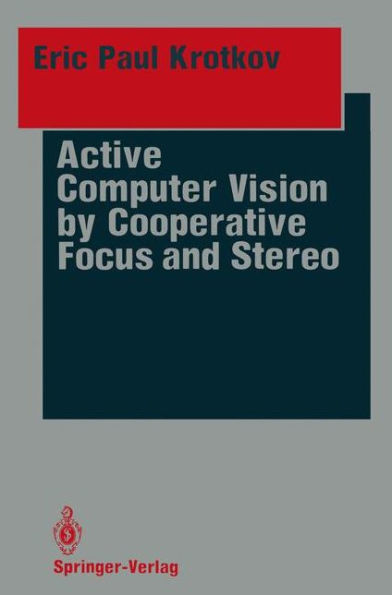Active Computer Vision by Cooperative Focus and Stereo
This book addresses an area of perception engineering which deals with constructive processes. A model of the environment is analyzed using the information acquired from mUltiple viewpoints of multiple disparate sensors at multiple time instants. Although the role of successive model building and active exploration of the environment, as is discussed in this book, is of great importance, only a few researchers of machine perception have thus far addressed the problem in these directions. Krotkov's book, which is a modification and continuation of his highly successful dissertation, focuses on active exploratory sensing in the context of spatial layout perception. He uses stereo and focus to obtain distance By information, and to eventually develop cooperative combining techniques. means of a stereo system with verging cameras, it is demonstrated that the distance measurements can be significantly improved by combining two sources. In addition, the problem of merging information from the multiple views is discussed in detail. As the field of perception engineering seems to be of growing scientific and applied importance, both practitioners and researchers in machine perception will find this book a valuable addition to their libraries. RameshJain Series Editor Acknowledgements I would like to thank Professor Ruzena Bajcsy for her constant encouragement and guidance during the five years of research leading to the dissertation upon which this book is based. Without her help in all matters, this work would never have been possible.
1136530432
Active Computer Vision by Cooperative Focus and Stereo
This book addresses an area of perception engineering which deals with constructive processes. A model of the environment is analyzed using the information acquired from mUltiple viewpoints of multiple disparate sensors at multiple time instants. Although the role of successive model building and active exploration of the environment, as is discussed in this book, is of great importance, only a few researchers of machine perception have thus far addressed the problem in these directions. Krotkov's book, which is a modification and continuation of his highly successful dissertation, focuses on active exploratory sensing in the context of spatial layout perception. He uses stereo and focus to obtain distance By information, and to eventually develop cooperative combining techniques. means of a stereo system with verging cameras, it is demonstrated that the distance measurements can be significantly improved by combining two sources. In addition, the problem of merging information from the multiple views is discussed in detail. As the field of perception engineering seems to be of growing scientific and applied importance, both practitioners and researchers in machine perception will find this book a valuable addition to their libraries. RameshJain Series Editor Acknowledgements I would like to thank Professor Ruzena Bajcsy for her constant encouragement and guidance during the five years of research leading to the dissertation upon which this book is based. Without her help in all matters, this work would never have been possible.
109.99
In Stock
5
1

Active Computer Vision by Cooperative Focus and Stereo
160
Active Computer Vision by Cooperative Focus and Stereo
160Paperback(Softcover reprint of the original 1st ed. 1989)
$109.99
109.99
In Stock

Product Details
| ISBN-13: | 9781461396659 |
|---|---|
| Publisher: | Springer New York |
| Publication date: | 12/01/2011 |
| Series: | Springer Series in Perception Engineering |
| Edition description: | Softcover reprint of the original 1st ed. 1989 |
| Pages: | 160 |
| Product dimensions: | 6.10(w) x 9.25(h) x 0.01(d) |
From the B&N Reads Blog
